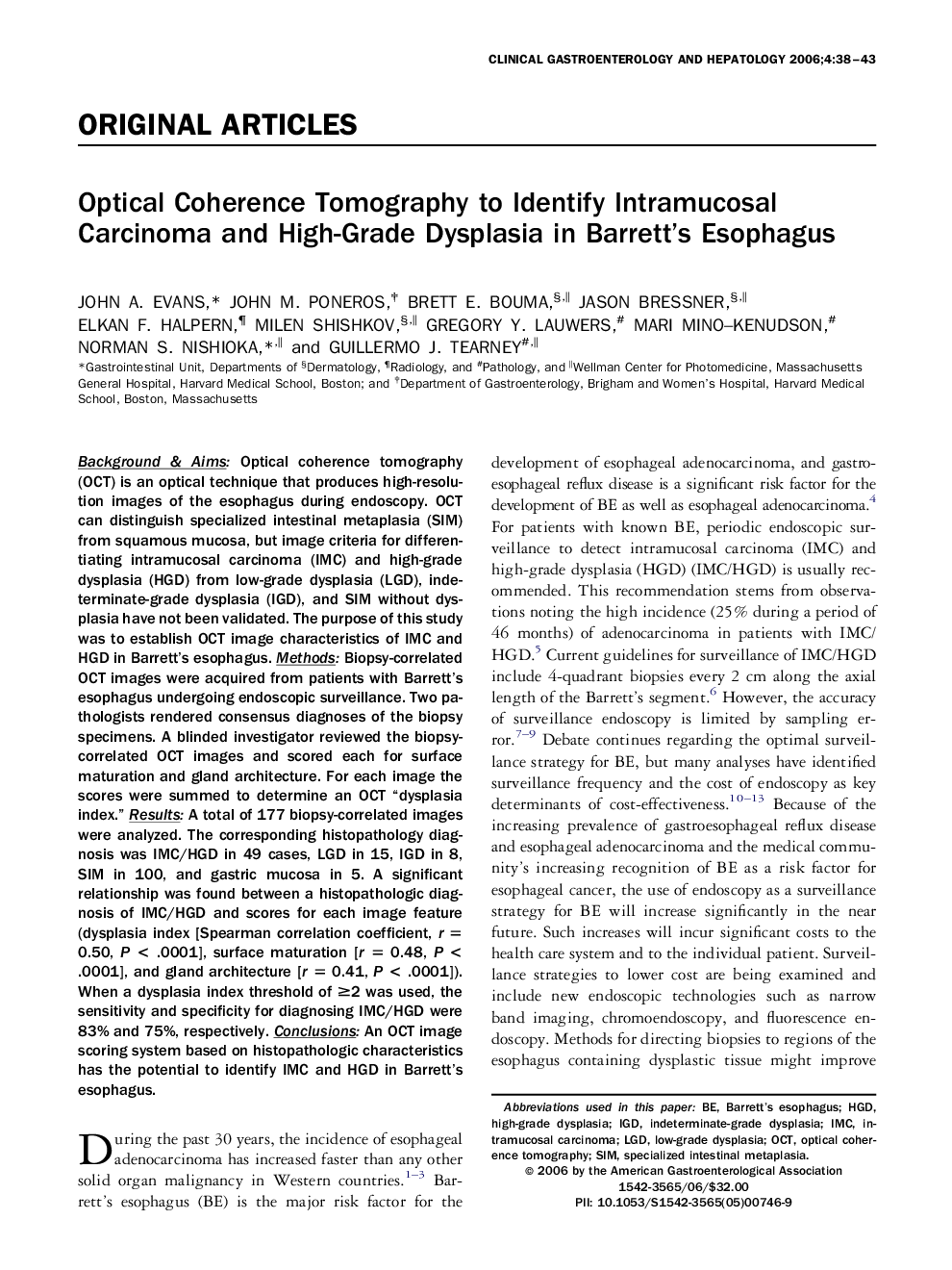| Article ID | Journal | Published Year | Pages | File Type |
|---|---|---|---|---|
| 3285690 | Clinical Gastroenterology and Hepatology | 2006 | 6 Pages |
Abstract
Background & Aims: Optical coherence tomography (OCT) is an optical technique that produces high-resolution images of the esophagus during endoscopy. OCT can distinguish specialized intestinal metaplasia (SIM) from squamous mucosa, but image criteria for differentiating intramucosal carcinoma (IMC) and high-grade dysplasia (HGD) from low-grade dysplasia (LGD), indeterminate-grade dysplasia (IGD), and SIM without dysplasia have not been validated. The purpose of this study was to establish OCT image characteristics of IMC and HGD in Barrett's esophagus. Methods: Biopsy-correlated OCT images were acquired from patients with Barrett's esophagus undergoing endoscopic surveillance. Two pathologists rendered consensus diagnoses of the biopsy specimens. A blinded investigator reviewed the biopsy-correlated OCT images and scored each for surface maturation and gland architecture. For each image the scores were summed to determine an OCT “dysplasia index.” Results: A total of 177 biopsy-correlated images were analyzed. The corresponding histopathology diagnosis was IMC/HGD in 49 cases, LGD in 15, IGD in 8, SIM in 100, and gastric mucosa in 5. A significant relationship was found between a histopathologic diagnosis of IMC/HGD and scores for each image feature (dysplasia index [Spearman correlation coefficient, r = 0.50, P < .0001], surface maturation [r = 0.48, P < .0001], and gland architecture [r = 0.41, P < .0001]). When a dysplasia index threshold of â¥2 was used, the sensitivity and specificity for diagnosing IMC/HGD were 83% and 75%, respectively. Conclusions: An OCT image scoring system based on histopathologic characteristics has the potential to identify IMC and HGD in Barrett's esophagus.
Keywords
Related Topics
Health Sciences
Medicine and Dentistry
Gastroenterology
Authors
John A. Evans, John M. Poneros, Brett E. Bouma, Jason Bressner, Elkan F. Halpern, Milen Shishkov, Gregory Y. Lauwers, Mari Mino-Kenudson, Norman S. Nishioka, Guillermo J. Tearney,
